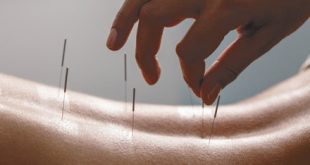Essential Tremor (ET) is a common neurological disorder characterized by involuntary, rhythmic shaking of certain parts of the body, most often the hands, but it can also affect the head, voice, and other body parts. Often mistaken for Parkinson’s disease, ET has distinct features and requires its own approach to diagnosis and management. In this article, we delve into the world of essential tremors, exploring what they are, recognizing their warning signs, discussing available treatments, and understanding their prevalence.
What Are Essential Tremors?
Essential Tremor is a neurological disorder that causes rhythmic, involuntary shaking of the affected body parts. It is considered the most common movement disorder, surpassing even Parkinson’s disease in prevalence. Unlike Parkinson’s, essential tremor is typically an action tremor, meaning it occurs when a person is trying to perform a voluntary movement, such as holding a cup or writing. This makes simple tasks like eating, drinking, and writing challenging for individuals with ET.
The exact cause of essential tremor remains unclear, but it is believed to be related to abnormal electrical brain activity that leads to motor dysfunction. Genetic factors are also thought to play a significant role in its development, as it often runs in families.
Warning Signs
Identifying essential tremor in its early stages can be critical for timely diagnosis and management. Here are some common warning signs:
• Rhythmic Shaking: The hallmark of ET is the presence of rhythmic shaking, typically in the hands. This shaking can also affect the head, voice, and other body parts.
• Worsening with Movement: Tremors become more pronounced during voluntary movements or when attempting to hold objects or perform fine motor tasks.
• Symmetry: Essential tremor often affects both sides of the body symmetrically. For example, if the right hand is affected, the left hand will typically exhibit similar symptoms.
• Tremors at Rest: Unlike Parkinson’s disease, essential tremor is generally not associated with tremors at rest or other Parkinsonian symptoms like bradykinesia (slowness of movement) or rigidity.
• Improvement at Rest: The tremors may diminish or even disappear when the affected person is at rest or asleep.
• Family History: A family history of essential tremor is common, suggesting a genetic component to the condition.
• Progressive Over Time: Essential tremor is typically progressive, meaning the symptoms may worsen with age.
Available Treatments
Although there is currently no cure for essential tremor, several treatment options are available to help manage its symptoms and improve the quality of life for affected individuals:
• Medications: Beta-blockers (e.g., propranolol) and anticonvulsants (e.g., primidone) are commonly prescribed to reduce tremor severity. These medications can be effective in many cases but may have side effects.
• Physical Therapy: Physical therapy and occupational therapy can teach individuals with ET techniques to control their tremors and improve coordination.
• Lifestyle Modifications: Reducing caffeine and alcohol intake, managing stress, and getting adequate rest can help minimize tremor severity.
• Deep Brain Stimulation (DBS): DBS is a surgical procedure that involves implanting electrodes in specific areas of the brain to regulate abnormal electrical activity. It is generally reserved for cases of severe, medication-resistant ET.
• Focused Ultrasound: High-intensity focused ultrasound (HIFU) is a non-invasive procedure that uses ultrasound waves to target and ablate the brain tissue responsible for the tremors.
• Botox Injections: Botulinum toxin injections can temporarily reduce tremors in specific muscle groups, such as those responsible for voice tremors.
Prevalence of Essential Tremors
Essential tremor is more common than most people realize. It is estimated to affect up to 10 million people in the United States alone, making it one of the most prevalent neurological conditions. It typically begins in the second half of life, with the highest prevalence among individuals over the age of 65. However, essential tremor can affect people of all ages, and in some cases, it may have an earlier onset, even in childhood.
Conclusion
Essential Tremor is a prevalent neurological disorder characterized by involuntary shaking of certain body parts, most commonly the hands. While it shares some similarities with Parkinson’s disease, it has its own distinct features, including its tendency to worsen with voluntary movements and its symmetric involvement of body parts. Recognizing the warning signs of ET is essential for early diagnosis and effective management.
Though there is no cure for essential tremor, various treatments, including medications, therapy, and surgical interventions, can help individuals manage their symptoms and improve their quality of life. As research continues into the underlying causes of ET, there is hope that more effective treatments and even a cure may emerge in the future. Increased awareness of this common condition and its management options is vital in providing support and improving the lives of those living with essential tremor.
Aqualane Clinical Research is a comprehensive clinical research group focusing on advancing medical therapies in a wide array of human disease states. We provide patients with the opportunity to participate in the discovery of treatments where none currently exist or where there is an unmet need for safety and more effectiveness. By collaborating with our patients, their care partners, and sponsors in the industry, we focus on the safe and ethical study of these emerging therapies.
Aqualane Clinical Research is looking for individuals suffering from Essential Tremors to participate in a new trial.
SAGE 324-ETD-202
(also called the KINETIC 2 Trial)
The KINETIC 2 TRIAL is looking for adults between ages 18 to 80 years old who have been diagnosed with essential tremor for at least three years to
participate in a clinical research study of an investigational drug.
The trial is 104 days long.
239-529-6780
3200 Bailey Lane • Suite 180 • Naples, FL 34105
www.aqualaneresearch.com
 Southwest Florida's Health and Wellness Magazine Health and Wellness Articles
Southwest Florida's Health and Wellness Magazine Health and Wellness Articles

